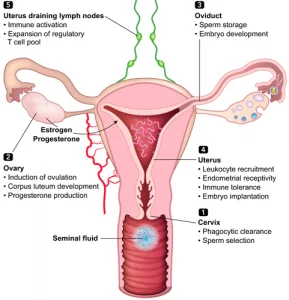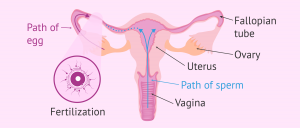As sperm enters the female regeneration plot, they are monitored to maximize preparation options and ensure that only sperm with typical morphology and high motility will be successful. After ovulation, oocytes are usually treated right away. There is evidence that treatment occurs in people when intercourse occurs up to five days before ovulation.
Because sperm are terminally separated cells that lack a functioning record and interpretation mechanism, they must make do in the female without the benefit of reparative systems that are available to a variety of cells. Sperm are exposed to actual stressors during the discharge and removal of the female component, and they may die as a result.
Furthermore, because sperm are allogeneic to females, they may benefit from the safeguards provided by the female safe framework for irresistible biological beings. As a result, sperm must make use of their limited resources in some way to maintain their maturity despite numerous obstacles.
Only a few thousand sperm inseminated during intercourse reach the Fallopian tubes, from which only one sperm treats an egg, according to popular belief.

Transport of Sperm:
There are a few factors that influence the vehicle in which sperm travels. The sperm should be capable of propelling themselves through the female vaginal and cervix environment.
This atmosphere, which is controlled by cyclic hormones, should be favorable to accept the sperm without annihilating them. Finally, the sperm must be able to transform into a state that allows them to enter the egg’s cell film.
Following discharge, the semen forms a gel that protects the sperm from the acidic vaginal environment. Chemicals from the prostate organ dissolve the gel within 20-30 minutes. This liquefaction is necessary to liberate the sperm for transit. The basic plasma is left in the vaginal canal.
The best motility sperm travels through the cervical body fluids that monitor the entrance to the uterus as they travel through the cervical body fluids that monitor the entrance to the uterus.
This barrier becomes slim and changes its sharpness during ovulation, creating a more hospitable environment for the sperm. Cervical body fluid serves as a source of increased sperm endurance.

Constrictions push sperm vertically into the fallopian tubes once they enter the uterus. The main sperm enters the tubes after ejection. In any instance, the primary sperm is more likely than the preparatory sperm. Motile sperm can survive for up to 5 days in the female conceptive parcel.
FAQs:
How long does sperm stay in a woman’s body?
Sperm can survive in the female body for up to 5 days after release.
When sperm enters the female body, where does it go first?
Sperm travel to the female uterus starts in the upper vagina and ends in the uterine cylinder’s ampulla.
What amount of time does it require for sperm to arrive at the cervix?
The sperm will appear at the cervix within a couple of moments after discharge.
